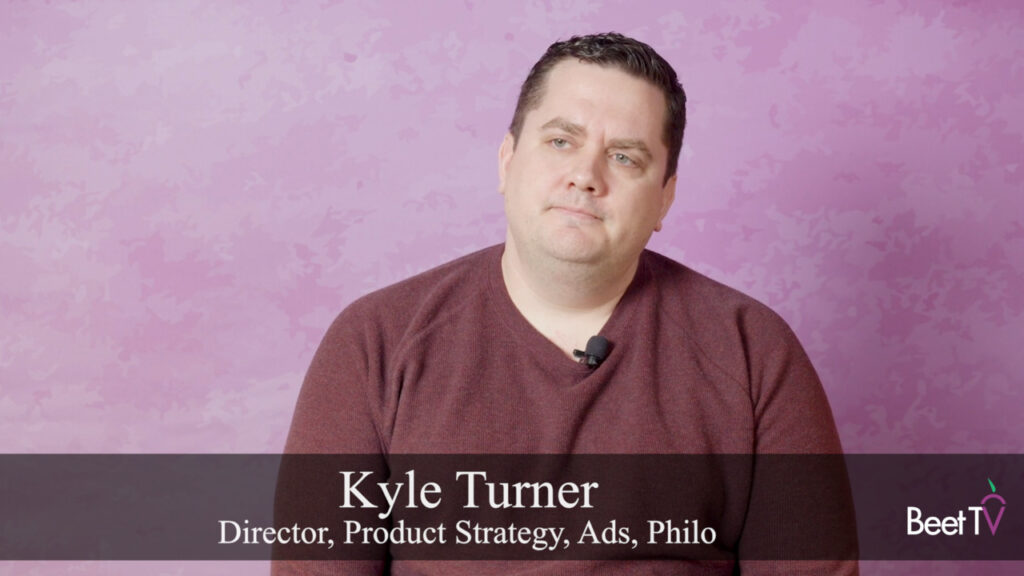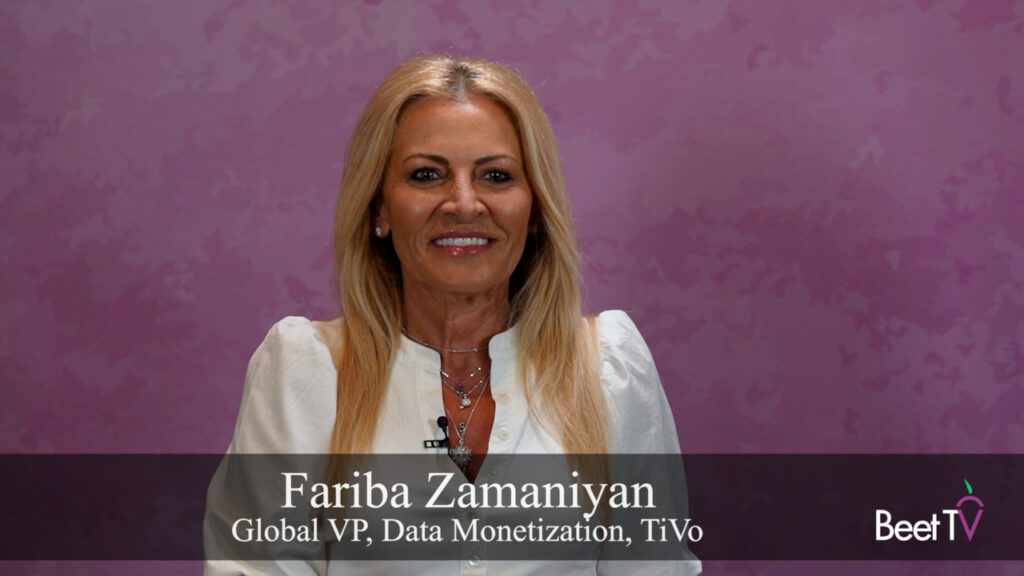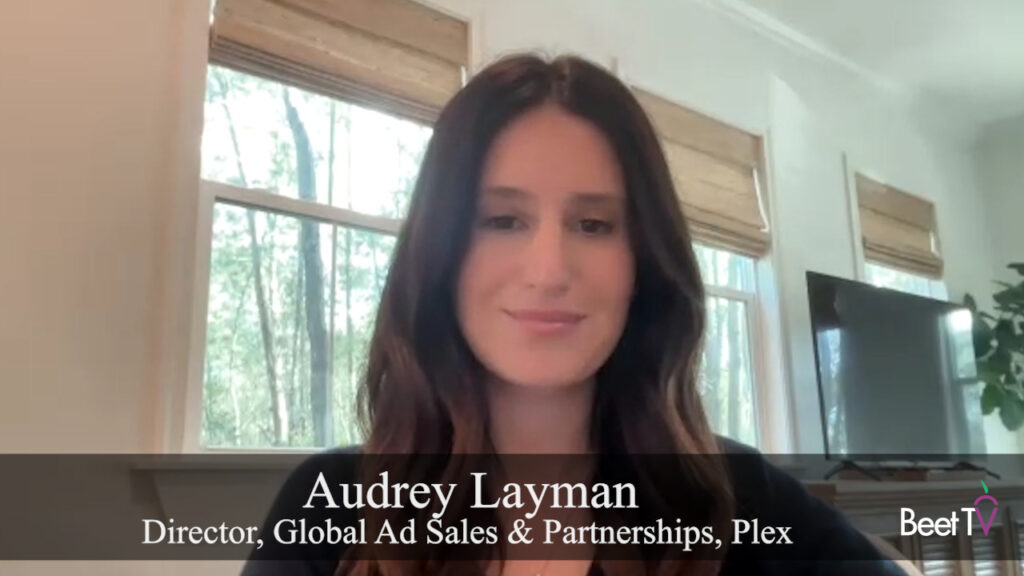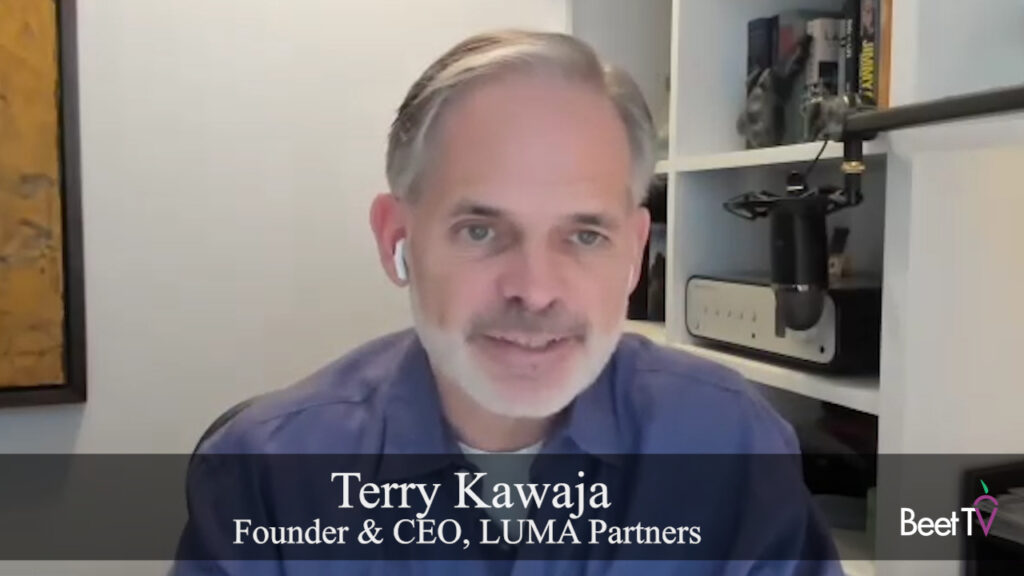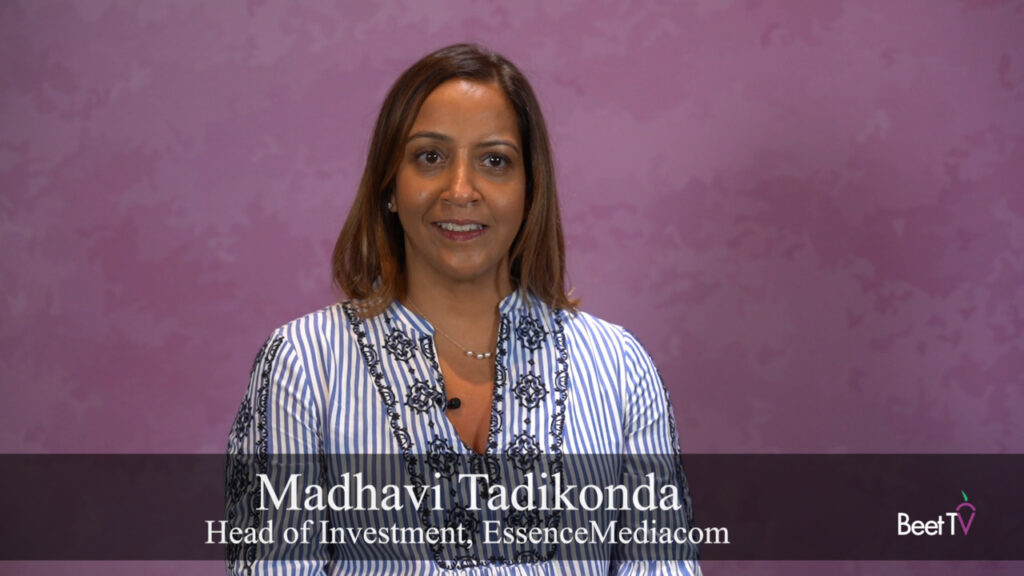SEATTLE – The “omnichannel utopia” promises to give marketers better insights on how different media channels produce comparable results. Those comparisons remain challenging amid the rapid shift in viewing habits that has only sped up during the pandemic.
“There was a lot of hope that we would be further along than we are,” Nicole Whitesel, executive vice president and managing director of Publicis Media, said about the evolution of omnichannel marketing and measurement. “There is opportunity in the chaos, and the chaos can actually deliver new things that you haven’t tried before.”
Whitesel spoke about the media environment for this episode of “Delivering on the Promise of Omnichannel Advertising,” a Beet.TV series presented by Mediaocean.
Comparing Metrics
Advertisers are grappling with comparisons of traditional metrics like a total rating point (TRP) for linear television with the measurement of impressions on over-the-top and streaming channels that have exploded in popularity during the COVID-19 health crisis.
With many households canceling cable and satellite service while connecting their TVs directly to the internet, media companies are backing platforms like Peacock, Pluto TV, Tubi and Xumo that carry advertising and are free to viewers.
“We’ve been working really closely with some of our clients who have an appetite to test out this new area and get some learnings under their belt,” Whitesel said. “When thinking about OTT and the hockey stick consumption that COVID brought on, what are the different ways you can buy? Programmatically? Direct? Are there innovative ways you can think about buy paths and get ahead of your competition?”
Desire for More Scale
Mass marketers would like to see more scale on OTT and streaming platforms, which is challenging amid the splintering of the media landscape and the migration of viewers to “walled gardens” like social networks that have their own first-party consumer data. Programmatic advertising adds another dimension to the process of buying media in “waterfall” auctions that prioritize bidders.
“Most of the time we’re asking for more scale then a lot times those platforms are delivering, and the reason why is because it is such a fragmented ecosystem,” Whitesel said. “As you’re going through that waterfall, understanding where that inventory is accessible and how you can buy it has been a bit of a challenge. That is going to be a key to unlocking the growth there and really getting into a place where you have transparency around which inventory you can access at what cost.”
Pandemic Challenges
The coronavirus pandemic helped to drive a surge in media consumption, though it also profoundly disrupted the production of new programming and broadcasts of live sports. As professional sports leagues like Major League Baseball and the National Basketball Association suspended operations, many advertisers scrambled to find audiences.
“A lot of clients were caught off guard,” Whitesel said. “Working through that has probably been one of the biggest challenges career-wise for a lot of us that were on the front lines with clients trying to decide what to run.”
Marketers also needed to change the tone of their messaging to match public sentiment that had grown increasingly worried about the health crisis and its effect on the economy. The pandemic also became a chance to test promising technologies like addressable advertising.
“We saw some really unique opportunities on shifting more into those OTT channels where their consumption was larger,” Whitesel said. “Most of our clients … were just trying to figure out what the right tone and tenor was, while still supporting their business.”
You are watching “Delivering on the Promise of Omnichannel Advertising,” a Beet.TV series presented by Mediaocean. Please click here for more videos.

















